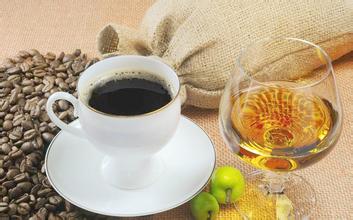Flavor description of South Minas Coffee Bean in Brazil Variety characteristics of Coffee beans
Flavor description of South Minas Coffee Bean in Brazil Variety characteristics of Coffee beans
Since the introduction of coffee trees from French Guiana (Guyana) in 1720, coffee production has gradually become a science. Before 1990, the Brazilian government carried out strict monitoring of the coffee industry, with both strict intervention and price protection measures, and the state has been implementing minimum price protection measures for farmers, resulting in coffee overproduction. Before World War II, the remaining stock reached 78 million bags, which had to be burned by fire or thrown into the water to destroy.
Since the opening of the free market in 1990, the original Brazilian Coffee Authority (IBC) has been replaced by the National Economic Association, the country's non-investment administrative body, which pursues a policy of non-intervention and allows producers to negotiate directly with exporters. The business activities of exporters are supervised by government legislation, and the relevant departments register legitimate exporters. Other kinds of Brazilian coffee, such as Rio and Parana, can be produced in large quantities because they do not need too much care. Although the taste is rough, it is a kind of coffee with good quality and low price. Because it is distributed all over Brazil and its solid quality varies, it has its own standard (NO.2~NO.8 according to the number of sundries). There are NO.13~NO.19 according to the size of the beans, which are divided into six grades according to the taste. Almost all Arabica varieties are of good quality and stable in price. The most famous one is "Brazil Santos", which has been a necessity of blended coffee and is familiar to the public since ancient times. Recently, the "Guilma Cup" is also highly rated.
Mogiana in the northeast of Sao Paulo province (north to south Minas) is also dominated by shaded bourbon, which is ranked as the three major boutique producing areas in Brazil along with Serrado and South Minas. Well-known estates in South Minas include Hope Manor and Montague. The famous "Datra Manor" and "Highland Manor" groups also have several large estates in Serrado and Mojiana. The winning estates of the four cup tests have become the treasures of the town shops of South Minas, Serrado and Mojiana.
Brazilian coffee taste with a low sour taste, with the sweet and bitter taste of coffee, the entrance is very smooth, and with a hint of grass, slightly bitter in the fragrance, smooth and smooth, the aftertaste can make people comfortable and pleasant. There are no outstanding advantages for Brazilian coffee, but there are no obvious defects. The taste is mild and smooth, the acidity is low, the mellow is moderate, and there is a hint of sweetness. All these soft flavors are mixed together. To distinguish them one by one is the best test for the taste buds, which is why many Santos fans love this kind of coffee, just because it is so mild and ordinary. Santos is suitable for ordinary baking and brewing in the most popular way. It is the best raw material for making Italian espresso and all kinds of fancy coffee.

Important Notice :
前街咖啡 FrontStreet Coffee has moved to new addredd:
FrontStreet Coffee Address: 315,Donghua East Road,GuangZhou
Tel:020 38364473
- Prev

Introduction to the characteristics of manor flavor and taste varieties of Panamanian Rosa Coffee
The characteristics of Manor flavor and taste of Panamanian Rosa Coffee cultivation is becoming more environmentally friendly, and farmers will plant, harvest and treat it sustainably. More international buyers and cup testers choose to visit the quality of coffee in Panama, but also to learn to make up for their shortcomings. Because the summer roses fit perfectly with the Panamanian environment.
- Next

Brazilian Coffee Bean planting Base Map-introduction of Brazilian Bourbon Rivida Coffee beans
Brazilian Coffee Bean planting Base Map-Brazilian Bourbon Rivida Coffee Bean introduction Top Brazilian coffee may not always be easy to get. Because, after the United States, Brazil itself has become the world's largest consumer of coffee and is still growing rapidly. A large number of high-quality coffee has found a place in the domestic market, and consumers' tastes are becoming more and more critical of Brazil's long hair in the coffee industry.
Related
- Detailed explanation of Jadeite planting Land in Panamanian Jadeite Manor introduction to the grading system of Jadeite competitive bidding, Red bid, Green bid and Rose Summer
- Story of Coffee planting in Brenka region of Costa Rica Stonehenge Manor anaerobic heavy honey treatment of flavor mouth
- What's on the barrel of Blue Mountain Coffee beans?
- Can American coffee also pull flowers? How to use hot American style to pull out a good-looking pattern?
- Can you make a cold extract with coffee beans? What is the right proportion for cold-extracted coffee formula?
- Indonesian PWN Gold Mandrine Coffee Origin Features Flavor How to Chong? Mandolin coffee is American.
- A brief introduction to the flavor characteristics of Brazilian yellow bourbon coffee beans
- What is the effect of different water quality on the flavor of cold-extracted coffee? What kind of water is best for brewing coffee?
- Why do you think of Rose Summer whenever you mention Panamanian coffee?
- Introduction to the characteristics of authentic blue mountain coffee bean producing areas? What is the CIB Coffee Authority in Jamaica?

